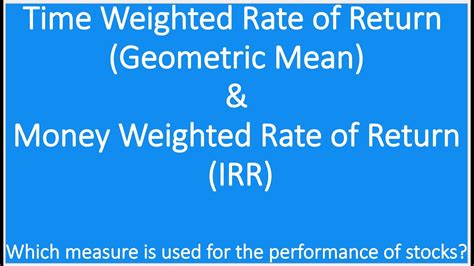Calculate MWRR Without a Calculator: Simple Steps
Calculating the Modified Internal Rate of Return (MWRR) without a calculator can be challenging, as it involves iterative calculations. The MWRR, unlike the standard IRR, accounts for the reinvestment of intermediate cash flows at a specified rate, usually a risk-free rate. While precise manual calculation is impractical, we can explore approximation methods and understand the underlying concepts to gain a better grasp of MWRR. This article will guide you through these methods.
Understanding the Challenges
The MWRR is inherently complex. Unlike simpler calculations, it doesn't lend itself to straightforward manual computation. It requires finding the discount rate that makes the Net Present Value (NPV) of a series of cash flows equal to zero. This often involves trial and error, making a calculator or spreadsheet software essential for accurate results.
Approximation Methods: When Precision Isn't Paramount
While a precise MWRR calculation without a calculator is unrealistic, we can explore approximations for situations where a close estimate suffices. These methods simplify the process, sacrificing accuracy for practicality.
-
Simplified Cash Flow Analysis: If the cash flows are relatively simple (few, consistent amounts), you can try to estimate the average annual return. This is a highly simplified approach and will only be remotely close to the MWRR in very specific scenarios. It's not recommended for anything beyond a very rough ballpark figure.
-
Using a Financial Table (if available): Some financial textbooks or handbooks provide tables that might contain approximate MWRR values for certain cash flow patterns. This is highly dependent on having access to such a table, and the range of applicable scenarios is extremely limited.
Understanding the Components: Breaking Down the MWRR Calculation
Even without calculating the precise MWRR, understanding the components of the calculation provides valuable insights:
What is the reinvestment rate in MWRR?
The reinvestment rate in MWRR is crucial. It represents the rate at which intermediate cash flows are assumed to be reinvested until the end of the investment period. Typically, this is set to a risk-free rate (like the yield on a government bond) to reflect a conservative reinvestment strategy. This rate directly impacts the final MWRR calculation. A higher reinvestment rate generally leads to a higher MWRR.
How does MWRR differ from IRR?
The key difference between MWRR and IRR lies in the treatment of intermediate cash flows. IRR assumes that cash flows are reinvested at the IRR itself, which can lead to an overestimation of the true return. MWRR, on the other hand, assumes a more realistic reinvestment rate, often a risk-free rate, leading to a potentially more conservative and accurate measure of return.
Can I use a simpler method to estimate returns?
For simpler investment scenarios with limited cash flows, a simplified average return calculation might provide a rough estimate. However, this method significantly lacks the accuracy and sophistication of the MWRR calculation, and should only be used for extremely rough estimates where precision is not required.
Conclusion: The Importance of Calculators and Software
While understanding the principles behind MWRR is crucial for financial literacy, accurate calculation without a calculator or specialized software is highly impractical. The iterative nature of the calculation makes manual computation extremely tedious and prone to errors. For precise results, utilizing financial calculators, spreadsheet software (like Excel or Google Sheets), or dedicated financial software is highly recommended. These tools provide efficient and accurate MWRR calculations, avoiding the complexities of manual approximation.

